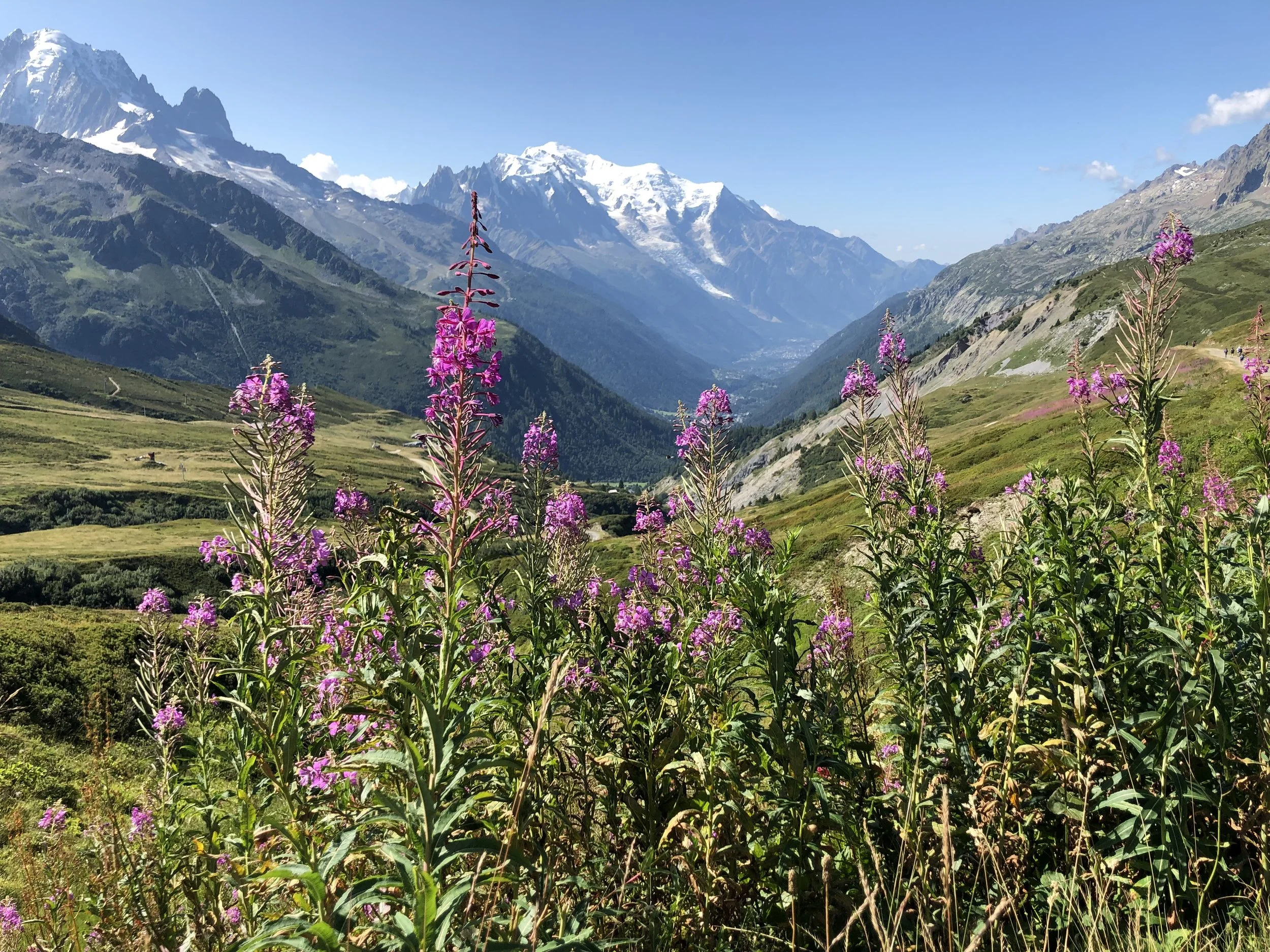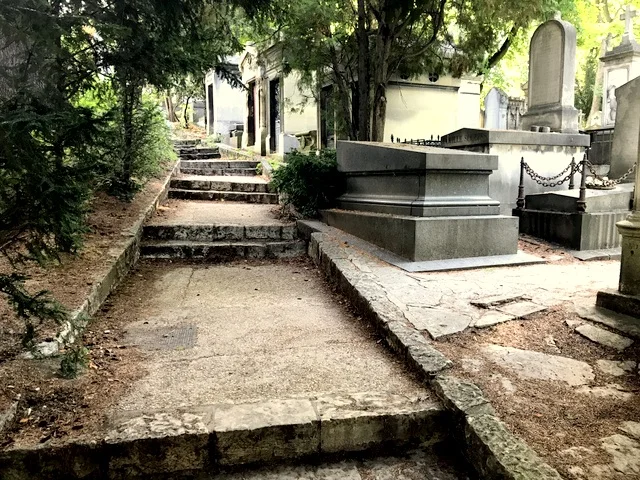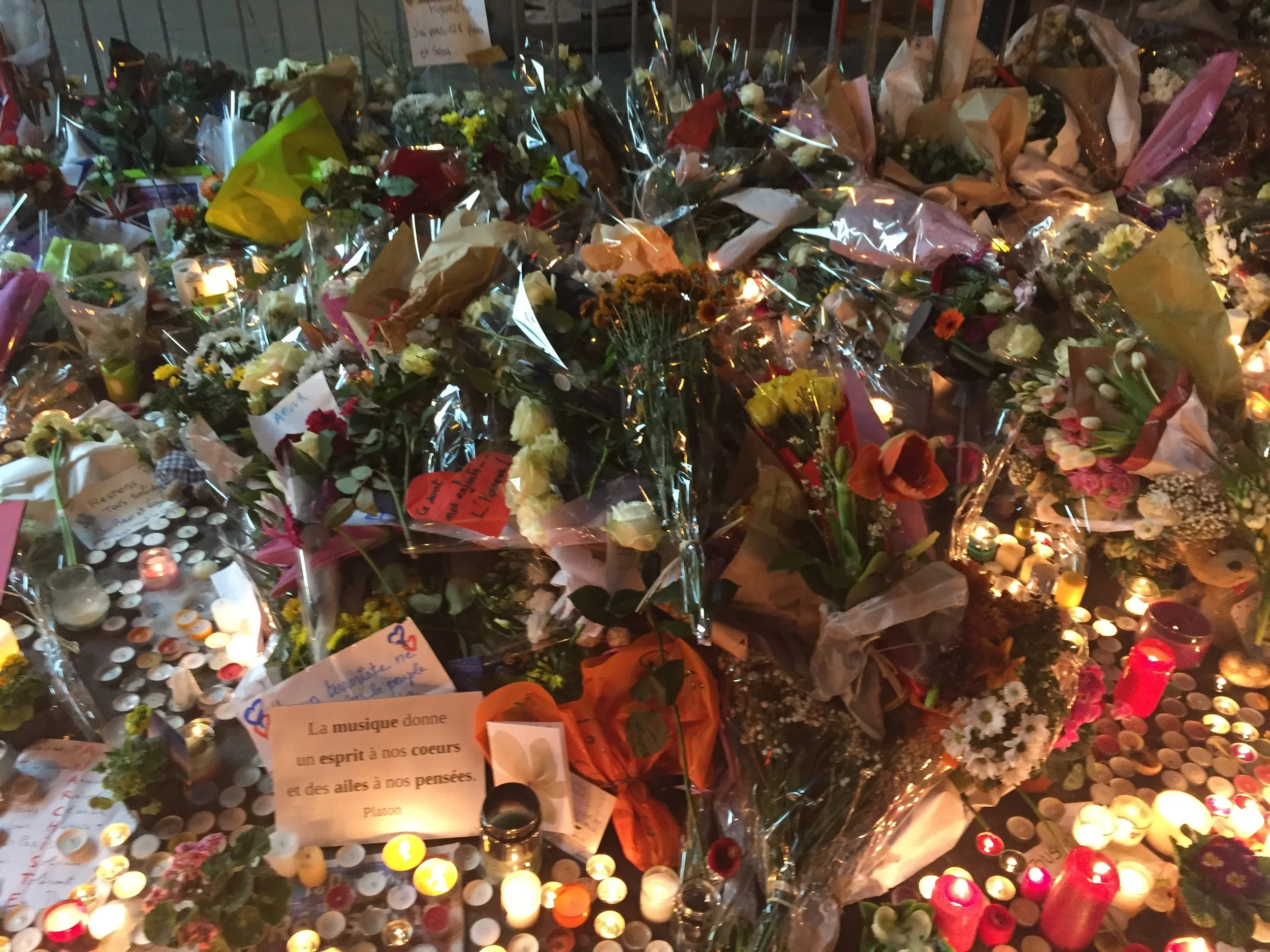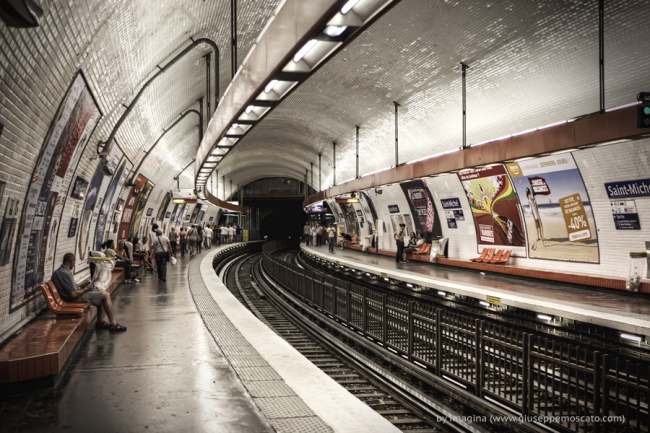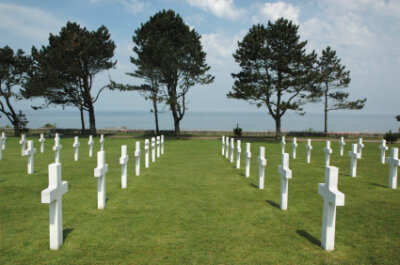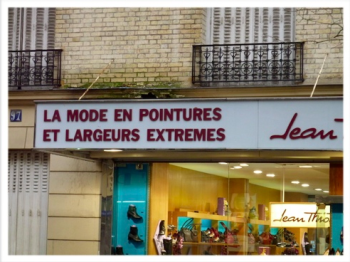At age sixty-four, Ellen Schecter signed up for a Tour du Mont Blanc hike despite her fear of heights. Pushing through nerves, she managed to trek along the steep and narrow trails, climb a ladder secured to the side of a mountain and cross a long swinging bridge high above a canyon. But it all came to a shuddering halt when she found herself petrified on all fours atop the rocky terrain. The mantra she had been repeating—“Feel the fear and do it anyway”—was no longer working.
All tagged France
Omaha Beach
When a group of study-abroad students in France embarks on a spontaneous long-distance walk to Omaha Beach, they discover that though they may have little in common, the walk was the same.
Climbing the Eiffel Tower
When Kristine Mietzner embarked on a mother-son trip to Europe during her son Ben’s senior year in high school, she hoped the trip would serve to provide him with experiences that might help him make sense of the world. Now, with Ben away, the world turned upside down, and travel on hold, it is the memories of their time together that provide her with comfort and context.
Lipstick Kisses, Chewing Gum and Terrorism in Paris
For expat Keith Digby, the tragedy of the French terrorist attacks turned unexpectedly personal during a visit to Père Lachaise Cemetery, Paris' best-known resting place.
Opting Out of Photo Ops
Dorty Nowak has lived part-time in Paris for years, though you wouldn't know it from looking at her photo albums. She'd been too busy enjoying Paris to stop and document her life there. But now, when she thinks of the photos she wished she'd taken, she has regrets.
No Music in Paris
When Jennifer Shanahan’s trip to Paris for a music-themed family getaway was silenced by a terrorist attack, a small group of street musicians served to momentarily dissipate the sadness, confusion, and fear surrounding the horrific event.
The Pretty American
He studied the French tapes. He bought the French software. He even took the French immersion course. Jules Older was ready for Paris. He would sound just like Maurice Chevalier and leave the French with a better impression of Americans. He would be the Pretty American.
The Inside Scoop on Paris Museums
Writer Dorty Nowak has lived in Paris, on and off, for ten years. When friends planning a trip to the City of Lights for the first time ask her what museums they should visit, her number one choice, the Carnavalet, rarely makes the guidebook "must visit" lists. Get the inside scoop on what makes it so special.
by Renee King
The chatter of tourists surrounded me and invaded my ears. I tried to block it out, but, truth be told, even my own travel companions were taking up space in my head. I closed my eyes, took slow deliberate breaths, and cleared my mind. When I opened my eyes, a vast white valley spread itself out before me – inviting me to take in its pristine beauty. Towering majestic mountains on either side bookended the sea of ice before me. Awestruck and breathless, I tried to comprehend that I was seeing was nature – raw, unforgiving, awesome for all my senses. As I heard questions from either side of me, I was able to deflect that unwanted noise. I breathed deeply and found something just for me on the Mer de Glace in Chamonix, France.
Mastering the Art of French Dining
by Dorty Nowak After growing up in a family where dinner was eaten off trays in front of the TV, I wanted to create a gracious dining atmosphere in my own home. Lit candles and cloth napkins were the norm, and I combed Good Housekeeping for tips to better the ambience for my family and guests. However, it wasn’t until I moved to Paris that I discovered how little I knew about what truly makes a pleasurable dining experience.
Driving In France
Nervously, I edged into traffic and was, within a few minutes of breath-holding, relieved by the minor miracle of finding a free parking space in front of a cafe. I sat down with my iPhone to map a plan for the week.
In search of sun and warmth, my idea was to head for the Mediterranean beaches but was told it would be very crowded in July, and the distance seemed too far – 8 hours on expensive autoroutes. So I convinced myself to keep it simple on the first day and headed to Beaune, the "wine capital of Burgundy," less than two hours away by toll road.
I felt like a decathlon athlete as I stepped off the train from Nice to Marseille. I had my most comfortable walking shoes on, a checklist of all the important sites to visit in my hand, and I was ready to tackle France’s second largest city. I looked around me. The port city was hectic with buses and cars whizzing past me and hundreds of people crowded onto the sidewalks. Still, I was primed to dive right in. I perused my inventory of important landmarks once more. I stretched my calf muscles, adjusted my backpack, and took a quick swig from my water bottle. I had eight hours to conquer Marseille and no time to waste.
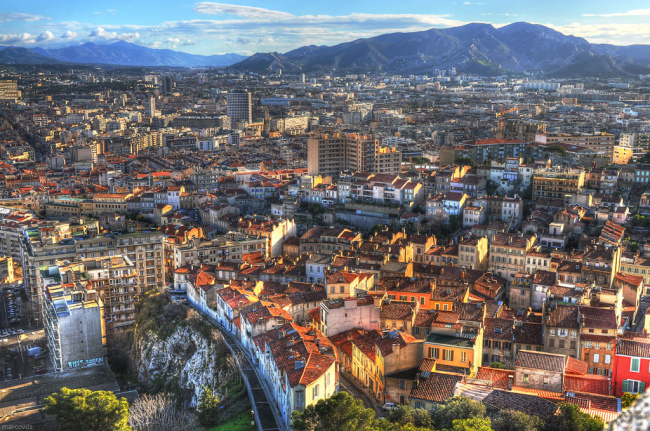 View from ND de la Garde. Photo by marcovdz via flickr CCL.
View from ND de la Garde. Photo by marcovdz via flickr CCL.
According to guide books I had read, there were eight places I needed to visit in Marseille. I had them arranged in order from closest to farthest from my train depot: the old port, the fortress of Chateau d’If, the Cathedral de la Major, Saint Victor’s abbey, Notre Dame de la Garde, Borély Park, Palais Longchamp, and the Museum of Beaux Arts. I had a return ticket for the evening so whatever I didn’t finish would remain unseen, but I was convinced I could match the frenetic pace of this seaport and emerge a winner in my tourist marathon.
I speed walked my way to the Old Port, where fishing boats and svelte yachts were crammed together like so many sardines in a watery can. I heard various shouts coming from the sellers as I passed the rickety ice tables packed with strange looking sea creatures, but I couldn’t stop until I saw the ferry boat for Chateau d’If: a famous prison and the subject of Alexander Dumas’ novel, The Count of Monte Cristo. The crowds were almost impassable on the island penitentiary, but they were no match for my fierce determination. I managed to squeeze my way past as I ran to see an empty cell, the communal cistern, and the rooftop view. Time was ticking and I had to catch the next ferry back so that I could head towards the Marseille Cathedral.
My Journey to the Union of Heaven and Earth
by Elyn Aviva
Join me on a journey into the unknown, where what you think you know melts away and is replaced by something bigger.
My Journey to the Union of Heaven and Earth
by Elyn Aviva
Join me on a journey into the unknown, where what you think you know melts away and is replaced by something—something “bigger.”
For decades I have been drawn to sacred sites and powerful places, drawn to go on pilgrimage across France and Spain, drawn to place my feet in the footsteps of if not my ancestors then of the ancestors of spirit who have traveled these paths before me. Like iron pulled toward a magnet, I have sought out well- and little-known places of power—ancient stone circles, half-buried dolmens, ruined Romanesque chapels, spire-topped inspiring cathedrals, thick forests, hidden holy wells, dark sacred caves. Seeking I knew not what, going I knew not why, except that I was driven by a simple but all-consuming question: “What are these places?” I think I hoped that, by going to enough of them, I would find the answer.
The Quest for La Baguette
Ahh, la baguette, quintessentially French. Biting into your favourite baguette is a soothing affair that will bring a smile of contentment to your face. When you find a good one, all others pale in comparison. Every time my feet land on French soil, I start anticipating my first tasty baguette that will welcome me back to my second home. But it has to be the right baguette. Just as not all French wine is worth drinking, not all baguettes are worth consuming.

Crusty on the outside and hole-y on the inside, the perfect baguette is not too chewy, but rather soft with small bits of bread that ball up in your mouth as you chew. It can be slightly tangy and definitely has a distinct aroma. And baguettes are serious business in France with the average person consuming half a loaf per day. Precise laws protect this French institution with strict regulations concerning the ingredients; any kind of additives are an absolute faux pas. Flour, yeast, water and salt are all that is needed. A light dusting of flour on the outside, and 20 minutes later, voilà, your baguette is ready to devour.
As serious baguette lovers, I knew my daughters and I would have our work cut out for us when we moved to Paris. With over 1800 boulangeries in the capital and 12 within a 10-minute walking distance of our new apartment, some taste-testing would definitely be involved. As soon as we dropped our suitcases in our new Parisian flat, we happily took on this challenge. I felt like Goldilocks of the three bears fame—I knew it would take several attempts until we got it "just right."
Making Sense of Centimes
by Dorty Nowak
Over the past nine years that I have lived in Paris, I’ve acquired a passable knowledge of the language and can navigate the city’s interconnected web of metros and busses with ease. Ask me the name of a good restaurant in the Marais, or the best time to go to the Louvre (Wednesday evenings) and I have a ready answer.
However please don’t ask me for change – I have a problem with centimes.
Meddling With Medieval Mysteries: Hiking through history in Southern France
Climbing up the wide circular stone staircase to our hotel room in the Chateau des Ducs de Joyeuse on the first night, I knew this would be a very different trip. I could just as easily be entering a medieval castle as a lodging facility -- and then I found out I was, though I suspect our modernized room was a lot less drafty than those of the lords and ladies who preceded us.
The experience, near Les Oliviers south of Toulouse, certainly set the tone for our Southern France Walking Through History tour—conducted, ironically, by a company called New England Hiking. As we hiked through, around, up and over one medieval village after another, traversing castles and countryside and learning about the Middle Ages of the 11th-14th centuries, we were immersed in history.
Our time in Paris had ended and saying goodbye proved difficult. I would miss the poetic rain and inspiring architecture, the grooved and powdered cobblestones beneath building walls that spewed graffiti, and the cloaked alleyways with bottles of cheap wine dangling from our fingers. It was everything I hoped it would be, which meant it wasn’t a postcard or hopeful imagination. Beauty mixed with the tangible. Drug dealers peddled underneath the illuminated Eiffel Tower at night, angry drivers swore at each other as they circled the Arc de Triomphe, and the Place de la Concorde was covered in bird shit.
Adventures were on the horizon, Spain awaited with sangrias, tapas, sunlight, and white-walled promenades. The only obstacle was getting to the Eurostar terminal somewhere off Fayette. When traveling, I’m not the type of person that likes to know what the day will bring. Wandering and last minute decisions have always yielded more memorable experiences than schedules or crowded attractions. Unfortunately, it wasn’t the ideal personality trait when we needed to catch a specific train and had no directions or general sense of where we were going. It also didn’t help that I drank three grand crèmes at a sidewalk bistro before leaving and had to stop every two blocks and find a washroom.
The three of us stumbled into a train station with the aid of blind luck and selective stupidity. Late and irritated, we hurried downstairs, rushing so we could blankly stare at the French metro lines for thirty minutes. Best bet memorized, we followed the crowd to the ticket kiosks.
Standing near the waiting commuters was a Parisian shouting about a deal in broken English. Naturally, being the thrifty travelers we were (beer money>comfort), we decided to investigate the bargain.
Honoring America's Fallen Soldiers in Normandy
by Roy Stevenson
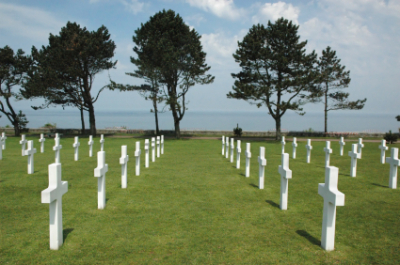 American Military Cemetery, Colleville, Normandy, FranceThe view from the top of the high, soft, sand dunes next to the American Military Cemetery at Colleville, Normandy, is great today. It’s a bright clear blue sky and I can see for miles. French fishing trawlers churn through the choppy, deep blue water, miles out to sea, leaving wide foaming wakes behind them. Gazing down across the long, deserted flat white expanse of Omaha Beach, I can see where the olive uniformed American soldiers debarked their landing craft, to shelter behind steel tetrahedrons, or sprint up the beach on D-Day, June 6, 1944.
American Military Cemetery, Colleville, Normandy, FranceThe view from the top of the high, soft, sand dunes next to the American Military Cemetery at Colleville, Normandy, is great today. It’s a bright clear blue sky and I can see for miles. French fishing trawlers churn through the choppy, deep blue water, miles out to sea, leaving wide foaming wakes behind them. Gazing down across the long, deserted flat white expanse of Omaha Beach, I can see where the olive uniformed American soldiers debarked their landing craft, to shelter behind steel tetrahedrons, or sprint up the beach on D-Day, June 6, 1944.
Descending the sand dunes, I walk the long 500 meters down the gently sloping beach to the water’s edge. It’s dead low tide. I turn around, looking back up towards the dunes. I’m amazed at how far away they are. They would seem like they were miles away, especially to a young soldier armed to the teeth and heavily weighed down with equipment.
It must have been terrifying trying to sprint up the beach into the teeth of a hailstorm of machine gun, rifle, and mortar fire. Of the soldiers in the first few D-Day landing craft, 90% didn’t even make it up the beach. In my mind’s eye I fleetingly see chaos, patches of red blood-drenched sand, and a flickering image of a young soldier in a soaked green uniform. “I must have seen “Saving Private Ryan” once too many times”, I think self-consciously.
Deep in thought, I trudge back up the steep, uneven sand dunes to the American Military Cemetery and walk along row upon row of perfectly aligned white crosses, on the vast 172-acre, smooth, emerald green-grassed plateau. The 9,387 crosses are a stupefying sight. They radiate outwards in perfectly straight lines no matter what angle they are viewed from.
Secrets Of A Paris 'Plus' Shopper
by Dorty Nowak
I skipped dessert today, which is not easy to do in Paris, where patisseries flaunt their delicacies on almost every street corner. I was on my way to my favorite bistro when I passed a store whose name caught my eye, “Plus Madame.” Since I’ve never seen anything “plus” relating to women’s clothes advertised in Paris, I stopped to look. A sign in the window informed me that the store specialized in sizes 42. 42! That’s a size 8 in the U.S. and a size 10 in the U.K., but in France, it’s a “plus.” Suddenly, so was I.
